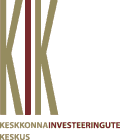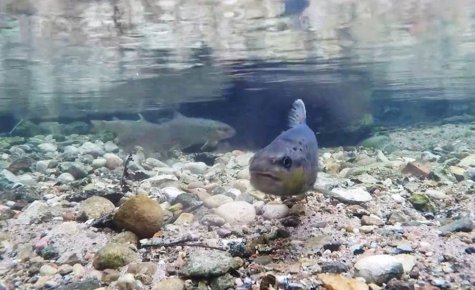River trouts live in 110 rivers and creeks
Text Ene Saadre, Põlula kalakasvatus
Image captured by Airras, LK forum
Translation Liis
River trout; brown trout Jõeforell or hõrnas Salmo trutta morpha fario
River and sea trout are different ecological forms of the same fish species. The sea trout is a diadromous fish, ie migrating between fresh and salt water, that spawns in rivers from which the young fish head for the sea on their feeding journey and return on becoming sexually mature to the river to spawn. The river trout is the stationary form of trout living permanently in rivers and without making the feeding journey into the sea. In Estonia the river trout lives in nearly 110 rivers and creeks. Its typical habitat is a fast-flowing water body with cool, pure water. The temperature suitable for river trout in summer varies from 7,6°C to 21,5°C. The minimum flow volume must be at least 0,01 m3/sec. The younger river trout usually settle in the rapids, the older prefer deeper sheltered sites in bank hollows and quiet water areas in river tributaries or go downstream to main parts of the river. In many rivers the number of river trout is limited by the scarcity of suitable spawning areas.
In Estonia the males of river trout usually become sexually mature in their third and the females in their fourth year, but for some individuals it may also happen a year earlier or later. The average fertility of females is about 2000 roe grains. The spawning begins in autumn when the water temperature falls to 6-7°C. It lasts from mid-October until the end of November, in rivers with spring water even until the end of January.
The embryonic development of the roe in the spawning nests usually lasts 3-5 months; this also depends on the water temperature. After the hatching the fry remain for some weeks in the spawning nest and grow from the nutrients in the yolk sac. When no more nutrients remain the trout fry creep out of the spawning nests and begin to feed on the larvae of aqueous invertebrates (mayflies, chironomids, black flies, to start with small ones, later larger.
One and two years old river trouts already feed on invertebrates living in the bottom of water bodies (caddis larva, amphipods etc), but also catch food from the surface of the water (e g Trichoptera). Invertebrates and their larva, if there are enough of them, are the basic food of river trout. On the winter menu of older trout frogs have a quite prominent place. Fish occur on the menu of brown trout only occasionally, but in case of our 20 cm long individuals they, particularly minnows, may constitute some of the food. As a rule fish have a significant role in the menu of older river trout only in rivers where invertebrate food organisms are scarce. There cannibalism also is common. In some rivers snails may be a quite important part of the food. During the spawning period roe of conspecifics have been found in the bellies of male trout. Within the limits of the same river part it has been noted that there are noticeable focussing on different food objects among the river trout. Some individuals feeding in the same place and at the same time may feed only on amphipods, others on the larvae of caddiesflies for instance.
A river trout may live up to 15 years but in Estonia individuals older than 7 years have not been documented. In water bodies here the length of river trouts will not exceed 50-60 cm or body mass 1,5-2,5 kg, but fish up to 70 cm long and weighing 3-4 kg have been caught. The record fish in Estonia is believed to be a 6,25 kg female river trout caught in the Prandi river in 1983 with a spinning rod.
The river trout is easy to propagate and it has been raised and planted into more than 30 rivers and creeks. The reproduction of salmonids in Estonia in fact started with river trout. In earlier years river trout were also raised for marketing. The first written information on this is from the year 1895 when Herman von Krause, owner of the Põlula manor, exhibited living river trout raised in outflow ponds of the Lavi spring in Riga at an agricultural show.
The river trout in the fish camera originate from river trout raised years ago in the Põlula Kalakasvatuskeskuses (Põlula Fish Rearing Centre) and let out as two-year old fish.
Literature:
1. Ojaveer, E., Pihu, E., Saat, T. (Editors) 2003. Fishes of Estonia. Tallinn.
2. Pihu, E., Turovski, A. 2001. Eesti mageveekalad. Zero Gravity OÜ kirjastus „Kalastaja Raamat“. Tallinn.
3. Tohvert, T., Paaver, T. 1999. Kalakasvatus Eestis. Tartu.









